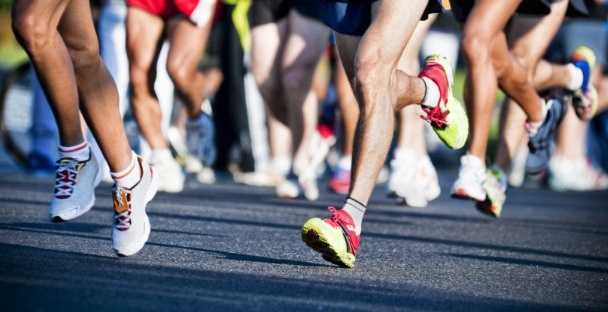A unique characteristic of our feet is that they actually prefer harder surfaces vs softer ones for running –this includes not wearing the softest running shoes.
Why?
Wearing a cushioned shoe increases mechanical shock on the leg and exhausts the ankles during running. Because of this, you will learn forefoot running a lot faster if you avoid wearing softer running shoes.
Why Runners Should Avoid Softest Running Shoes
Presumably, runners would benefit the most in a softer running shoe. However, in a review paper, Robbins and Gouw used data from several earlier studies, where researchers discovered that the softest running shoe produced the greatest amount of shock in runners, suggesting that runners are better off running barefoot or at least, in barefoot-simulated footwear. Why?
When a runner runs barefoot, the nerves in the feet allow them to cope with shock through impact-moderating behavior –something a shoe cannot provide. When impact-moderating behavior is high, usually when running barefoot, the shock is lowest.
However, soft running shoes are a considerable problem because they reduce impact-moderating behavior which in turn, exposes the musculoskeletal system to greater shock. Thus, the clinical usefulness of soft running shoes remains questionable.
Ankles Work Harder to Provide Balance
Form a performance perspective, soft cushioned running shoes may exhaust the ankle musculature during running.
Robbins and Guow suggested that softer running shoes increases vertical axis stiffening because the runner struggles to gain secure support in response to an unstable surface, that being the soft running shoe. The result is a sharp increase in ankle angulation in attempt to stabilize the plantar surface when soft running shoes are worn.
In proof of this, Leuthi et al. found that the ankle angulation rate soared to 112% when barefoot runners ran in soft running shoes.
Why?
Soft running shoes reduce proprioceptive input from the feet, which in turn, frays the communication lines to the proprioceptors in the ankles. This is why it is common to endure a loss of a sense of equilibrium when walking and running on unnatural soft surfaces.
This may also explain why forefoot running learners struggle with Achilles injury.
Presumably, forefoot running increases the risk of Achilles injury because greater demands are placed on the ankles and calves. However, to date, there is no evidence to support this. The truth is, forefoot running doesn’t cause Achilles injury, forefoot running in soft shoes probably does because the ankles are destabilized during stance.
More From Run Forefoot:
- Why Older Runners Should Go Minimal
- Best Books on Barefoot Running
- What is CECS and Why It’s a Common Problem In Runners
- What are the Most Common Injuries in Heel Strike Runners
- Heel Strike Running vs Forefoot Strike Running
References:
Luethi SM, Denoth L, Kaelin X, et al. The influence of the shoe on foot movement and shock attenuation in running. In Jonsson B (Ed.) Biomechanics X-B, pp. 931-935, Human Kinetics Publishers, Champaign II, 1987
Robbins SE and Gouw GJ. Athletic footwear and chronic overloading: a brief review. Sports Med, 1990; 9(2):77-85.
Bretta Riches
BSc Neurobiology; MSc Biomechanics candidate, ultra minimalist runner & founder of RunForefoot. I was a heel striker, always injured. I was inspired by the great Tirunesh Dibaba to try forefoot running. Now, I'm injury free. This is why I launched Run Forefoot, to advocate the health & performance benefits of forefoot running and to raise awareness on the dangers of heel striking, because the world needs to know.
Latest posts by Bretta Riches (see all)
- Heel Strike Running Causes Slipped Discs - 25/04/2024
- How to Train Yourself to Not Heel Strike When Running - 24/04/2024
- Cushioned Running Shoes Found to Be Bad for Ankles - 23/04/2024


Leave a Reply